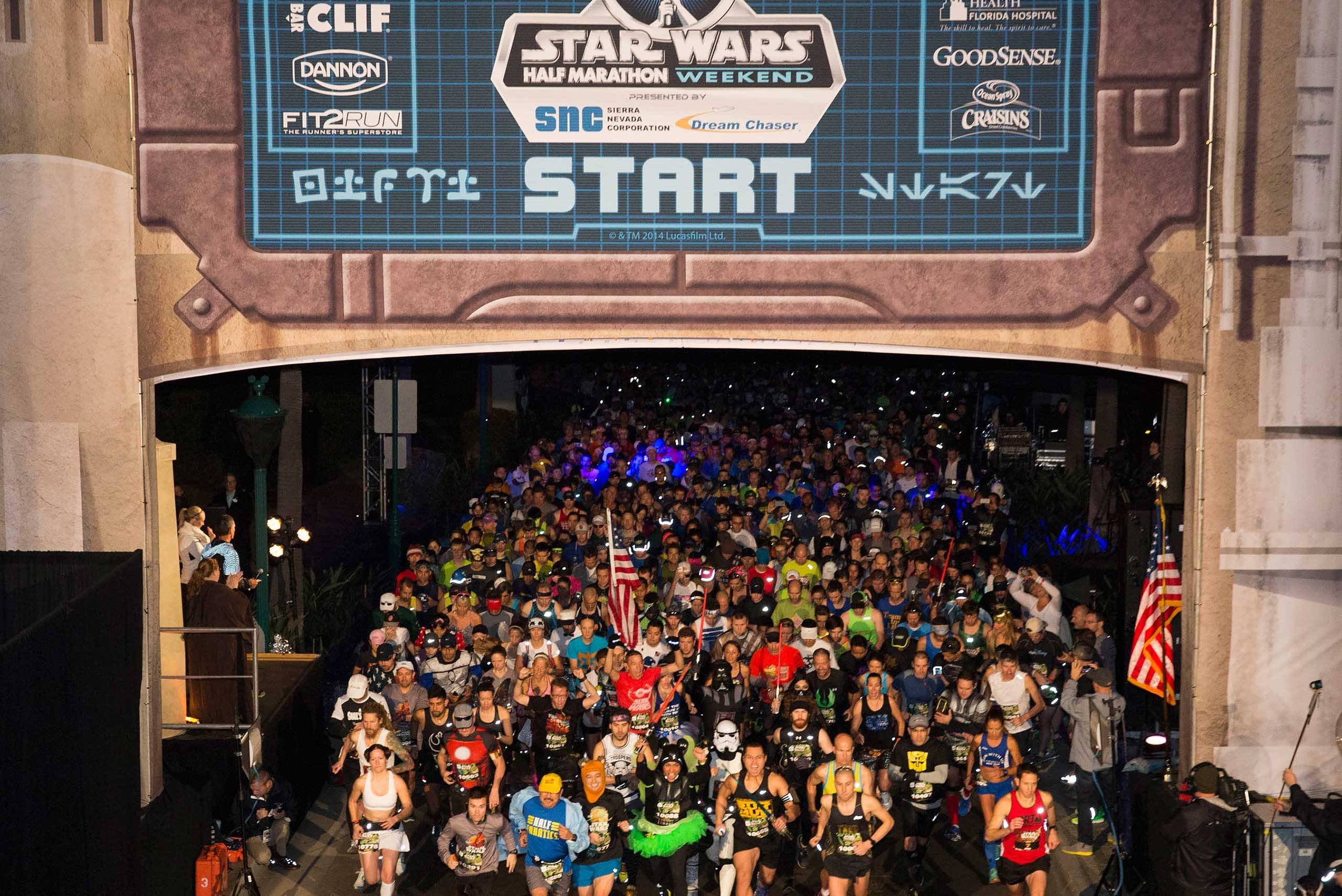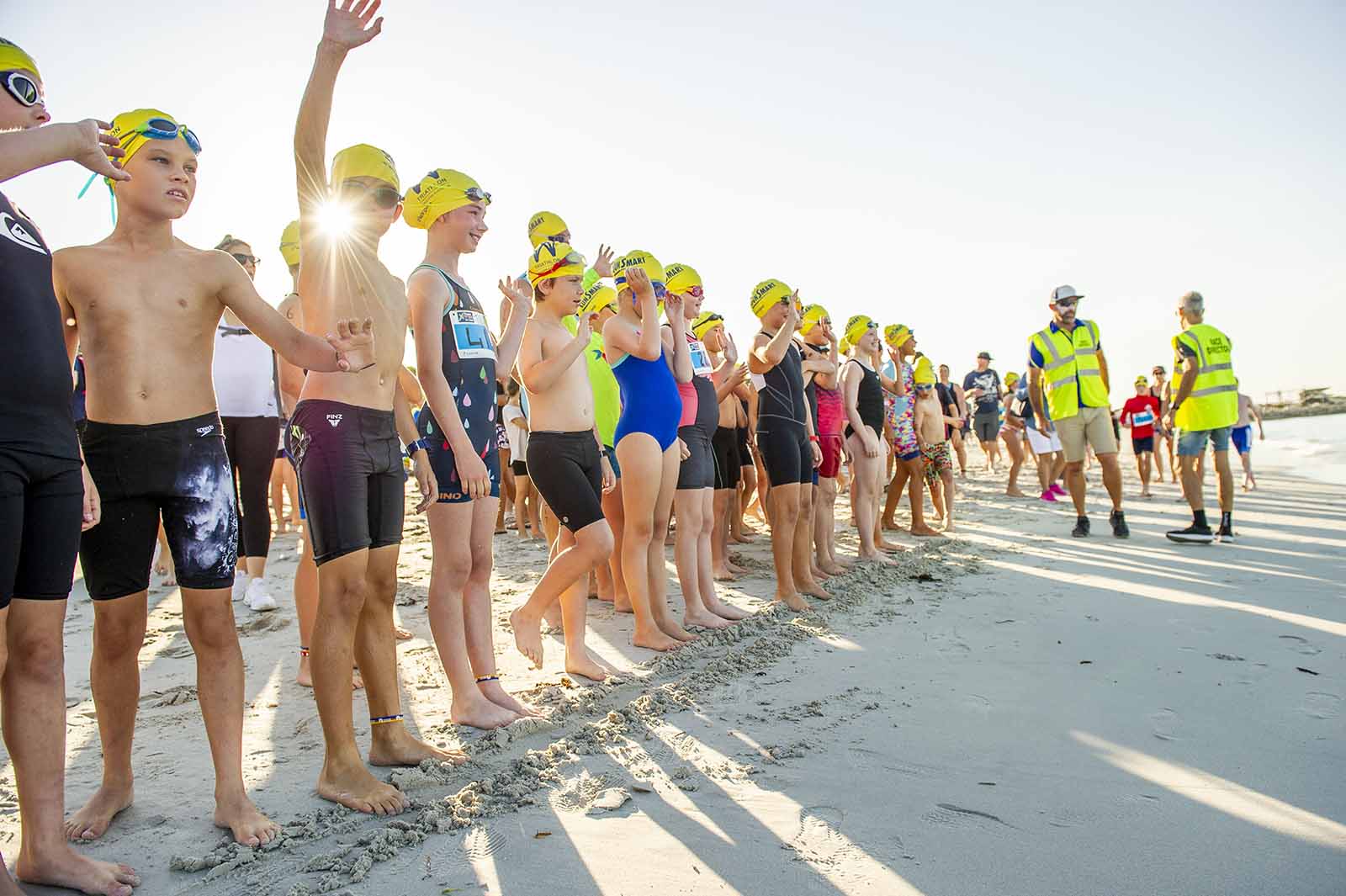

Featured
How To Grow Kids Stamina
Published: October 15, 2023
Learn effective strategies and exercises to boost kids' stamina with our featured guide on how to grow their endurance and energy levels.
Introduction
Welcome to the world of active and energetic kids! As parents, we always want the best for our children, and ensuring their overall well-being is of utmost importance. One key aspect of their well-being is their stamina. Stamina, often referred to as endurance, is the ability to sustain physical or mental effort for an extended period of time. It plays a crucial role in their overall development and is essential for their growth, both physically and mentally.
Improving kids’ stamina not only enables them to engage in physical activities with ease but also enhances their cognitive abilities, concentration, and mental resilience. In this article, we will explore the various benefits of improving kids’ stamina and the factors that can affect it. We will also delve into effective strategies for building their stamina through physical activities and the importance of proper nutrition and rest in achieving optimal results.
Building stamina in kids is not only about pushing them to their limits; it’s about creating a balance between challenge and recovery. It’s about instilling healthy habits and encouraging an active lifestyle that will serve them well into adulthood. Join us as we embark on this journey to boost our kids’ stamina and equip them with the strength and endurance to face life’s challenges head-on.
Benefits of Improving Kids’ Stamina
Improving kids’ stamina brings a multitude of benefits that positively impact their physical, mental, and emotional well-being. Let’s explore some of these benefits:
- Enhanced Physical Performance: When kids have better stamina, they can engage in physical activities for longer durations without feeling exhausted. This translates to improved performance in sports, recreational activities, and everyday tasks.
- Improved Cardiovascular Health: Regular exercise and activities that boost stamina contribute to a healthy heart and cardiovascular system. Increased stamina means the heart can pump blood more efficiently, leading to lower resting heart rate, improved blood circulation, and reduced risk of cardiovascular diseases.
- Increased Energy Levels: Building stamina helps kids develop higher energy levels, allowing them to stay active throughout the day. They will experience less fatigue and have more energy for school, play, and other daily activities.
- Enhanced Mental Alertness: Physical activity stimulates the brain and improves cognitive function. When kids have better stamina, it enhances their mental alertness, concentration, and overall academic performance.
- Boosted Self-Confidence: As kids improve their stamina and achieve their physical goals, their self-confidence and self-esteem soar. They become more resilient, setting and reaching new milestones, which builds their confidence to face challenges in other aspects of life as well.
- Stress Relief: Regular physical activity releases endorphins, which are natural mood boosters. Improved stamina allows kids to handle stress and anxiety better, promoting better mental well-being and overall stress management.
These benefits highlight the importance of improving kids’ stamina, not only for their immediate physical health but also for their long-term well-being. Help your kids unlock their full potential by boosting their stamina and setting them up for a healthy and active lifestyle.
Factors Affecting Stamina in Kids
Stamina levels in kids can be influenced by various factors. By understanding and addressing these factors, we can effectively improve their overall stamina levels. Let’s explore some of the key factors that can impact kids’ stamina:
- Age: Stamina levels can vary depending on a child’s age. Younger children may have lower stamina compared to older ones, as their bodies are still developing and adapting to physical exertion.
- Genetics: Some kids may have a naturally higher or lower stamina level due to their genetic makeup. While genetics play a role, it’s important to note that stamina can still be improved through proper training and lifestyle choices.
- Activity Level: Sedentary lifestyles can negatively impact stamina levels. Kids who spend excessive time on screens and have limited physical activity may experience reduced stamina. Encouraging regular physical activity is key to improving stamina.
- Diet and Nutrition: Proper nutrition is essential for building stamina. Inadequate intake of essential nutrients such as carbohydrates, proteins, and vitamins can hinder stamina development. A balanced diet that includes whole grains, lean proteins, fruits, and vegetables is crucial for improving stamina levels.
- Sleep Quality: Restful and adequate sleep is vital for the body to recover and rebuild stamina. Lack of sleep or poor sleep quality can leave kids feeling tired and drained, affecting their stamina levels.
- Hydration: Dehydration can lead to fatigue and decreased stamina. Ensuring that kids are properly hydrated before, during, and after physical activities is crucial for maintaining optimal stamina levels.
- Health Conditions: Certain health conditions such as asthma, obesity, and anemia can affect stamina levels in children. It’s important to address any underlying health issues and work with healthcare professionals to develop appropriate strategies for improving stamina.
By considering these factors and making necessary adjustments, parents and caregivers can play a significant role in improving and enhancing kids’ stamina. Through a holistic approach that involves physical activity, nutrition, rest, and proper medical care, we can help our children develop the stamina they need to thrive in various aspects of their lives.
Building Stamina through Physical Activities
Physical activities play a crucial role in improving kids’ stamina. Engaging in regular exercise not only strengthens their muscles and cardiovascular system but also enhances their endurance levels. Here are some effective strategies for building stamina through physical activities:
- Aerobic Exercise: Aerobic activities such as running, swimming, cycling, and dancing are excellent for boosting stamina. These activities increase cardiovascular endurance, improve lung capacity, and elevate the heart rate, ultimately improving overall stamina levels.
- Interval Training: Incorporating interval training into workouts is an effective way to build stamina. Alternating between periods of high-intensity bursts and recovery periods challenges the body, allowing it to gradually adapt and improve stamina over time.
- Cross-Training: Engaging in a variety of physical activities helps work different muscle groups and prevents boredom. Mix activities like jogging, jumping rope, playing sports, and doing bodyweight exercises to keep the body and mind engaged while building stamina.
- Progressive Overload: Gradually increasing the intensity, duration, or frequency of physical activities is essential for building stamina. This progressive overload helps push the body beyond its current limits, stimulating adaptation and stamina improvement.
- Consistency: Consistency is key when it comes to building stamina. Regular, structured physical activity sessions are more effective in improving stamina compared to sporadic or inconsistent workouts. Aim for at least 60 minutes of moderate to vigorous activity daily.
- Outdoor Play: Encourage kids to engage in active play outdoors. Running, skipping, playing tag, and climbing help improve stamina naturally while providing a fun and stimulating environment.
- Team Sports: Participating in team sports not only improves stamina but also enhances overall physical fitness, coordination, and social skills. Sports like soccer, basketball, and tennis involve continuous movement and high-intensity bursts, making them ideal for stamina-building.
Always ensure safety precautions are in place when engaging in physical activities, and consider seeking guidance from fitness professionals or coaches to structure an appropriate training program. By incorporating these strategies and making physical activity a regular part of your child’s routine, you can effectively build their stamina and set them up for a healthy and active lifestyle.
Importance of Proper Nutrition for Boosting Stamina
Proper nutrition plays a vital role in boosting kids’ stamina levels. Providing the right fuel for their bodies ensures optimal performance during physical activities and enhances their stamina. Here’s why proper nutrition is essential:
- Energy Production: Carbohydrates are the primary source of energy for the body. They provide the fuel needed for physical activities and play a crucial role in improving stamina. Including complex carbohydrates like whole grains, fruits, and vegetables in your child’s diet ensures a sustained release of energy throughout the day.
- Protein for Muscle Repair and Growth: Protein is essential for muscle repair, growth, and maintenance. Engaging in physical activities puts stress on the muscles, and proper protein intake helps rebuild tissues and supports stamina development. Include lean sources of protein such as chicken, fish, beans, and tofu in your child’s meals.
- Hydration: Proper hydration is key for maintaining stamina and preventing fatigue. Water helps transport nutrients and oxygen to the muscles, supports the body’s natural cooling mechanism, and optimizes overall performance. Encourage your child to drink an adequate amount of water throughout the day, especially before and after physical activities.
- Essential Micronutrients: Consuming an array of vitamins and minerals is crucial for stamina development. Iron, for example, plays a role in enhancing oxygen transport in the body, while vitamins C and E help protect against oxidative stress. Ensure your child’s diet includes a variety of fruits, vegetables, nuts, and seeds to provide these essential micronutrients.
- Avoidance of Sugary and Processed Foods: Sugary and processed foods may give a quick energy boost but can lead to energy crashes and reduced stamina. These foods provide empty calories and lack essential nutrients. Instead, focus on providing nutrient-dense whole foods that provide sustained energy and support overall health.
- Timing of Meals and Snacks: For optimal stamina, it’s important to fuel the body at the right times. Encourage your child to have a balanced meal or snack containing carbohydrates, proteins, and healthy fats about 2-3 hours before physical activities. This ensures that they have enough energy to sustain their activities.
Proper nutrition supports the body’s energy production, muscle repair, and overall health, which ultimately boosts stamina. By making conscious choices and providing a well-rounded diet, you can ensure that your child has the necessary nutrients to perform at their best and enjoy sustained stamina during physical activities.
Ensuring Adequate Rest and Recovery
Rest and recovery are essential components of building kids’ stamina. While physical activities are crucial for improving endurance, it’s equally important to allow the body time to rest and recover. Here’s why adequate rest and recovery are vital:
- Muscle Repair and Growth: Rest allows the body’s muscles to repair and rebuild after strenuous activities. During rest periods, the body adapts to the stress placed on the muscles, leading to strength and stamina gains over time. Ensure your child has scheduled rest days throughout the week to allow their muscles to recover.
- Prevention of Overtraining: Overtraining can lead to decreased stamina, increased risk of injuries, and mental burnout. It’s important to strike a balance between physical activity and rest to prevent overtraining. Listen to your child’s body and encourage them to take breaks when needed.
- Sleep Quality and Duration: Quality sleep is crucial for overall health and stamina development. During sleep, the body repairs and regenerates tissues, consolidates memories, and supports optimal brain function. Ensure your child follows a consistent sleep schedule and gets the recommended hours of sleep for their age.
- Relaxation Techniques: Encourage your child to incorporate relaxation techniques such as deep breathing, meditation, or gentle stretching into their routine. These techniques can help reduce physical and mental stress, promoting better rest and recovery.
- Scheduling downtime: In addition to rest days, provide your child with downtime throughout the day. This can include engaging in quiet activities, such as reading or drawing, that allow them to relax, recharge, and rejuvenate.
Remember, rest and recovery are just as important as physical activities when it comes to building stamina. By prioritizing adequate rest, sleep, and relaxation, you allow your child’s body to heal, rebuild, and adapt to the demands placed upon it. This ensures they can sustain their energy levels, prevent burnout, and continue to progress in their stamina-building journey.
Encouraging a Healthy Lifestyle for Improved Stamina
A healthy lifestyle is a key factor in improving kids’ stamina. By promoting healthy habits and fostering a supportive environment, we can help our children develop long-lasting stamina and overall well-being. Here are some ways to encourage a healthy lifestyle:
- Lead by Example: Children are more likely to adopt healthy habits when they see their parents and caregivers practicing them. Be a role model by engaging in regular physical activity, making nutritious food choices, and prioritizing rest and self-care.
- Make Physical Activities Fun: Find activities that your child enjoys and make them a regular part of their routine. Whether it’s dancing, playing a sport, or going for family walks, make sure the focus is on enjoyment rather than just exercise. This helps create a positive association with physical activities and encourages long-term participation.
- Limit Screen Time: Excessive screen time can lead to a sedentary lifestyle and hinder stamina development. Set limits on screen time and encourage alternative activities such as outdoor play, reading, or engaging in hobbies that promote physical movement and cognitive development.
- Promote Active Transportation: Encourage your child to walk, bike, or use other active modes of transportation whenever possible. This not only adds to their daily physical activity but also instills a habit of being active and independent.
- Involve the Whole Family: Make healthy living a family affair. Plan activities and meals that involve the whole family, such as cooking together, going for family hikes, or participating in sports. This creates a supportive environment and strengthens family bonds while promoting a healthy lifestyle.
- Encourage Outdoor Play: Spending time in nature has numerous benefits for physical and mental well-being. Encourage your child to spend time outdoors, engaging in unstructured play, exploring, and connecting with the natural world. This not only boosts stamina but also fosters creativity, problem-solving skills, and a sense of adventure.
- Teach Healthy Coping Mechanisms: Help your child develop healthy ways to cope with stress and emotions. Encourage open communication, teach them relaxation techniques, and guide them towards activities such as journaling, art, or playing musical instruments. These coping mechanisms contribute to mental well-being and overall resilience.
By incorporating these strategies and creating an environment that supports a healthy lifestyle, you can lay the foundation for improved stamina and overall well-being. Remember, small changes over time can have a significant impact on your child’s stamina and set them up for a lifetime of healthy habits.
Overcoming Challenges in Building Kids’ Stamina
Building kids’ stamina can sometimes present challenges. However, with perseverance, patience, and a proactive approach, these challenges can be overcome. Here are some common challenges and strategies to overcome them:
- Lack of Interest: Some children may initially lack interest in physical activities or find it challenging to stay motivated. Encourage them by finding activities they enjoy, setting achievable goals, and offering praise and rewards for their efforts.
- Time Constraints: With busy schedules and numerous commitments, finding time for physical activities can be challenging. Prioritize physical activity by scheduling dedicated time for it, involving the whole family, or integrating it into everyday routines, such as walking or biking to school.
- Physical Limitations: Children with certain health conditions or physical limitations may face unique challenges in building stamina. Consult with healthcare professionals or physical therapists for guidance and modified activities that suit their abilities and promote stamina development.
- Inconsistent Routine: Inconsistency can hinder progress in building stamina. Establish a consistent routine by setting regular times for physical activities, planning meals ahead of time, and ensuring adequate rest and sleep. Consistency and repetition are key to building endurance.
- Competing Priorities: Balancing academics, extracurricular activities, and social commitments can make it challenging to prioritize stamina-building activities. Help your child understand the importance of stamina for overall wellness and performance in other areas of life. Encourage them to make stamina-building activities a priority without neglecting other responsibilities.
- Weather Limitations: Extreme weather conditions can limit outdoor physical activities and impact stamina-building efforts. During unfavorable weather, consider indoor alternatives such as dancing, jumping rope, or using exercise videos or apps. Embrace the opportunity to teach adaptability and flexibility.
- Comparisons and Peer Pressure: Children may face comparisons or peer pressure related to their stamina levels or participation in physical activities. Foster a supportive environment by celebrating individual progress, promoting the value of effort and perseverance, and encouraging a growth mindset. Emphasize that everyone progresses at their own pace.
By addressing these challenges and finding creative solutions, you can help your child overcome obstacles and continue to build their stamina. Remember to maintain a positive and supportive environment, provide encouragement and guidance, and celebrate their achievements along the way. With patience and persistence, they can develop the stamina they need to thrive.
Conclusion
Improving kids’ stamina is a journey that requires a holistic approach and a commitment to their overall well-being. By focusing on physical activities, proper nutrition, rest, and a healthy lifestyle, we can effectively boost their stamina levels and set them up for a lifetime of healthy habits.
Enhancing kids’ stamina brings a multitude of benefits, including improved physical performance, enhanced cardiovascular health, increased energy levels, and boosted self-confidence. It also contributes to mental alertness, stress relief, and overall resilience.
Factors such as age, genetics, activity level, diet, sleep quality, and health conditions can influence stamina levels in children. Understanding and addressing these factors is key to improving their overall stamina.
Building stamina through physical activities helps kids develop endurance, strength, and mental resilience. Incorporating aerobic exercises, interval training, and cross-training, along with progressive overload and consistency, can effectively increase stamina levels.
Proper nutrition is essential for boosting stamina. Energy-providing carbohydrates, muscle-repairing proteins, hydration, and essential micronutrients play a crucial role in stamina development. Avoiding sugary and processed foods and timing meals and snacks strategically contribute to sustained energy levels.
Adequate rest and recovery allow the body to repair and adapt, preventing overtraining and promoting stamina gains. Quality sleep, relaxation techniques, and downtime are essential for muscle repair, mental well-being, and sustained stamina.
Encouraging a healthy lifestyle is crucial for improved stamina. Leading by example, making physical activities fun, limiting screen time, promoting active transportation, involving the whole family, and teaching healthy coping mechanisms foster a supportive environment that encourages long-term stamina development.
While challenges may arise, with perseverance and proactive solutions, they can be overcome. Lack of interest, time constraints, physical limitations, inconsistent routines, and environmental limitations can be addressed through motivation, prioritization, professional guidance, and adaptability.
In conclusion, building kids’ stamina is an ongoing journey that requires patience, consistency, and a holistic approach. By prioritizing physical activities, proper nutrition, rest, and a healthy lifestyle, we can empower our children with the strength, endurance, and resilience they need to thrive physically, mentally, and emotionally.







